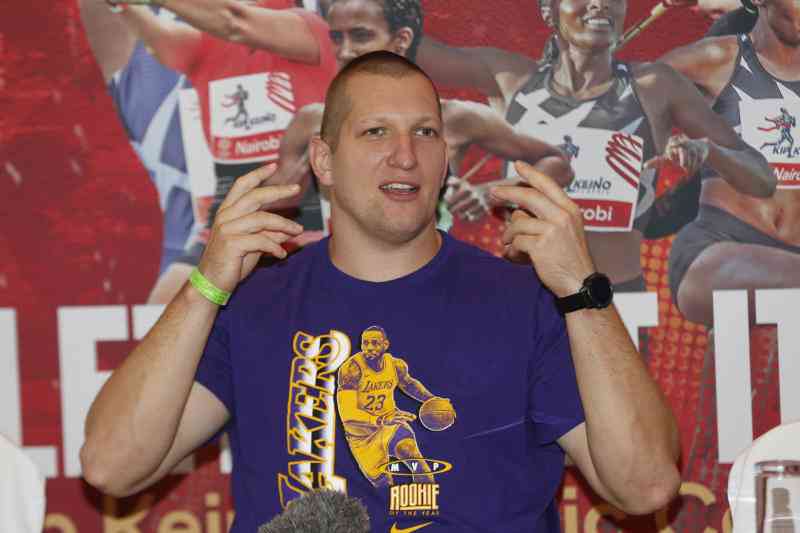Initially when she needed a loan, Joan Mwashi would approach a group she belonged to under a microfinance institution.
She would table her proposal. The group, which acted as her guarantor, would then discuss it and if she qualified, the chairperson would forward her application to the microfinance institution for processing.
That was then. Today, Mwashi, who runs a small business in Kenya's capital Nairobi, does not need to go through such a lengthy procedure to get a loan. In fact, she never borrows money from the microfinance institution anymore.
Mwashi belongs to a table-banking group through which she borrows money whenever she needs. In this group named Sifa, members meet regularly, contribute money and it is lend out to those who need it at a small fees.
The group has kept Mwashi and nine other members from expensive microfinance loans.
"Table-banking loans are better than those from microfinance institutions. When I borrow money from our group, I pay with an interest rate of three percent regardless of the period I would take. With microfinance, the rates were as high as 26 percent," she said in a recent interview with Xinhua.
Mwashi is among hundreds of women in Kenya who are turning to table-banking groups for loans.
The groups are slowly becoming the main source of small loans for women in the East African nation as many find credit terms set by microfinance institutions tough.
"I have borrowed up to 505 U.S. dollars from our table-banking group on four different occasions since I joined about a year ago. I took the money to boost my business and I have since cleared the loans because of the low rates," said Mwashi.
She reckoned that if she had taken the money from a microfinance institution, she would still be struggling to repay to-date.
"Table-banking groups are revolutionizing the small loans' market. Though ours are informal, we are turning out to be better options for women," said Marceline Otiato, the chairperson of Uzima, a table-banking group.
So far, according to Otiato, her group has lent out up to 920 dollars to members.
"The main goal with our table-banking group is to allow members to access small loans. We agreed as members to put our interest rate at 3.5 percent," said Otiato, adding that nearly all their 11 members were initially in microfinance groups.
Kenya's Deputy Vice President's wife Rachel Ruto is leading the crusade to have Kenyan women embrace table-banking.
Rachel notes the practice helps women save money and access loans cheaply, a simple way to fight poverty. She traverses the East African nation teaching women how to form and run the groups. The impact of the table-banking groups is already being felt in the microfinance sector.
Stay informed. Subscribe to our newsletter
"I have lost several clients to table-banking groups. Majority of them left after completing their loans. They demanded their share and quit to join the table-banking groups," said Benson, who works as a credit officer with a microfinance institution in Nairobi.
According to the second quarter report from the Central Bank of Kenya (CBK), the country's banking sector notes that in the period leading to June, the number of microfinance banks loan accounts dropped to 430,393 from 442,518 in March.
CBK attributed the reduction to the introduction of new products that necessitated merging of some existing loan accounts. However, it is evident that table-banking groups are eating into the market.
Benson said the focus in the sector is shifting from recruiting women into microfinance groups to asking them to save their money with deposit-taking institutions.
"Women in the groups collect a lot of money, so they need a bank to save. We ask them to save with us, although a good number of them are still with our microfinance groups," Benson added.
 The Standard Group Plc is a
multi-media organization with investments in media platforms spanning newspaper
print operations, television, radio broadcasting, digital and online services. The
Standard Group is recognized as a leading multi-media house in Kenya with a key
influence in matters of national and international interest.
The Standard Group Plc is a
multi-media organization with investments in media platforms spanning newspaper
print operations, television, radio broadcasting, digital and online services. The
Standard Group is recognized as a leading multi-media house in Kenya with a key
influence in matters of national and international interest.
 The Standard Group Plc is a
multi-media organization with investments in media platforms spanning newspaper
print operations, television, radio broadcasting, digital and online services. The
Standard Group is recognized as a leading multi-media house in Kenya with a key
influence in matters of national and international interest.
The Standard Group Plc is a
multi-media organization with investments in media platforms spanning newspaper
print operations, television, radio broadcasting, digital and online services. The
Standard Group is recognized as a leading multi-media house in Kenya with a key
influence in matters of national and international interest.





